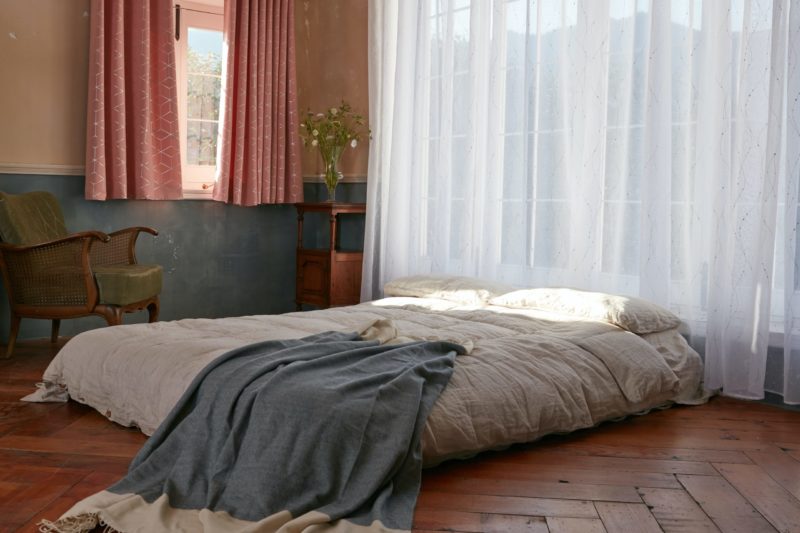Maybe you’ve gotten tired of all the pre-made curtain designs in the store and want to make your own. Or you want to work on those hand or machine sewing skills. Regardless, one important thing you need to know is how many yards of fabric do you need for curtains.

Of course, everyone knows that the key to every successful project is ample preparation. In this case, you’re going to have to know how much fabric a single set of curtains might need. It also helps that you already know the exact yardage before going to the store.
Knowing just how much you are going to need will help you save yourself from unnecessary spending. However, the chances are, some fabric store owners might push you to buy more than the amount you really need. So it’s best if you come prepared.
Standard curtain sizes
You can often see some standard lengths in stores ranging from 60” to 120” long and have a fullness factor of 2.5. These require about five to eight yards, depending on how long and wide you want your fabric.
Another standard example is a curtain panel with 84” finished length and a 27” repeat. You will need to compute for the first panel using 84” + 16” = 100 calculation. For the following panels, you will need 84″ + 16″ + 27″ = 127″ which will give you the following:
2 panels = 227″ (6.30 yards / 7 yards to be safe)
3 panels = 354″ (9.83 yards / 10 yards to be safe)
4 panels = 481″ (13.36 yards / 14 yards to be safe)
How to measure curtain sizes
Don’t worry if you don’t want to follow standard curtain measurements. You can always learn how to make your own curtains by computing for the right size. From there, we can easily get the yardage of a particular curtain size.
Step 1: Calculate the width.
First, we need to know the width of the curtain. To get the value, you need to measure the entire width of your window and multiply it by a fullness factor of two or three (depending on your preferred fullness).
For example, suppose a window is 36 inches wide. We want to cover it with a curtain that has a standard fullness factor of 2.5. To get the measure of the fabric, we have to multiply 36” by 2.5 to get 90” of the panel width.
Step 2: Measure the length.
Measuring the panel length is pretty easy since we don’t have to multiply it by a particular factor. Decide how long you want your curtains to be. For example, many people prefer their drapes to hover an inch above the floor.
Take your tape measure and run it along the wall, starting from the rod’s placement all the way to your desired length. Take note of the measurements. Unfortunately, we also have to do a few simple calculations for the curtain header.
Measure the height of your curtain header or facing, which is the length of the rod to the top edge of the window. The formula is the finished length + header = total panel length. Basically, that is how many yards of fabric do you need for the curtain’s length.
Note:
If you are using rod pocket curtains, measure the circumference of the rod to make sure you have just enough fabric to form the pocket. However, if you are using clip rings, you may want to note that it adds an inch or two to the overall length. Deduct the diameter of the rings to maintain the same curtain length.
Step 3: Add the hemming
Now that we have the final width and length of a single curtain panel, it’s time to add the seam allowances. Let’s start by adding a 1 to ½ inch folding seam added to the length of the fabric. Afterward, add another two or three inches for the hemming on the top and bottom.
Therefore the calculation should be finished length + Header + 1 inch to turn under 1/2 inch at each end of panel + Hem (2 to 3 inches). Next, add a one or two-inch hem for the sides of the curtains.
Step 4: Counting the panels
If you only need one panel, then your measuring journey stops here. However, if you need around two or more curtain panels, multiply the final width you have after performing steps one and three.
Count how many panels you need to cover the entire window. Multiply the value you have by the number of panels. For example, an 80-inch curtain width (with the fullness factor and 2-inch hemming included) should be followed.
Step 5: Converting to yards
You will notice that we did all our calculations in inches. Now, we can go ahead and convert it to yards. You should know that one yard is equivalent to one yard. So, you can use an inch-to-yard calculator to work on the yardage of your curtains.
Overall, once you get the measurements and calculations right, you should already know the answer to how many yards of fabric do you need for curtains. Take note that if you want to make tabs, you have to include additional inches. Try to go for a curtain that’s a little more than the one you need. Just don’t go overboard by buying one that is a yard too much.
